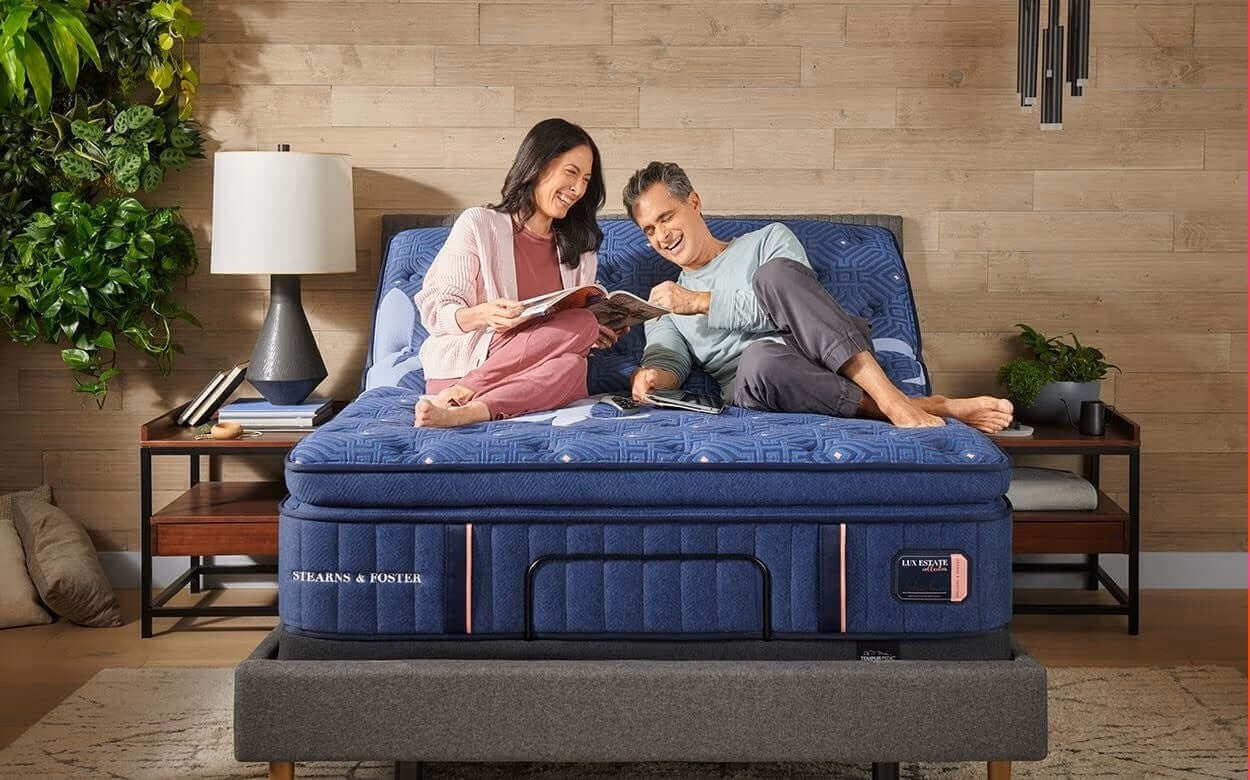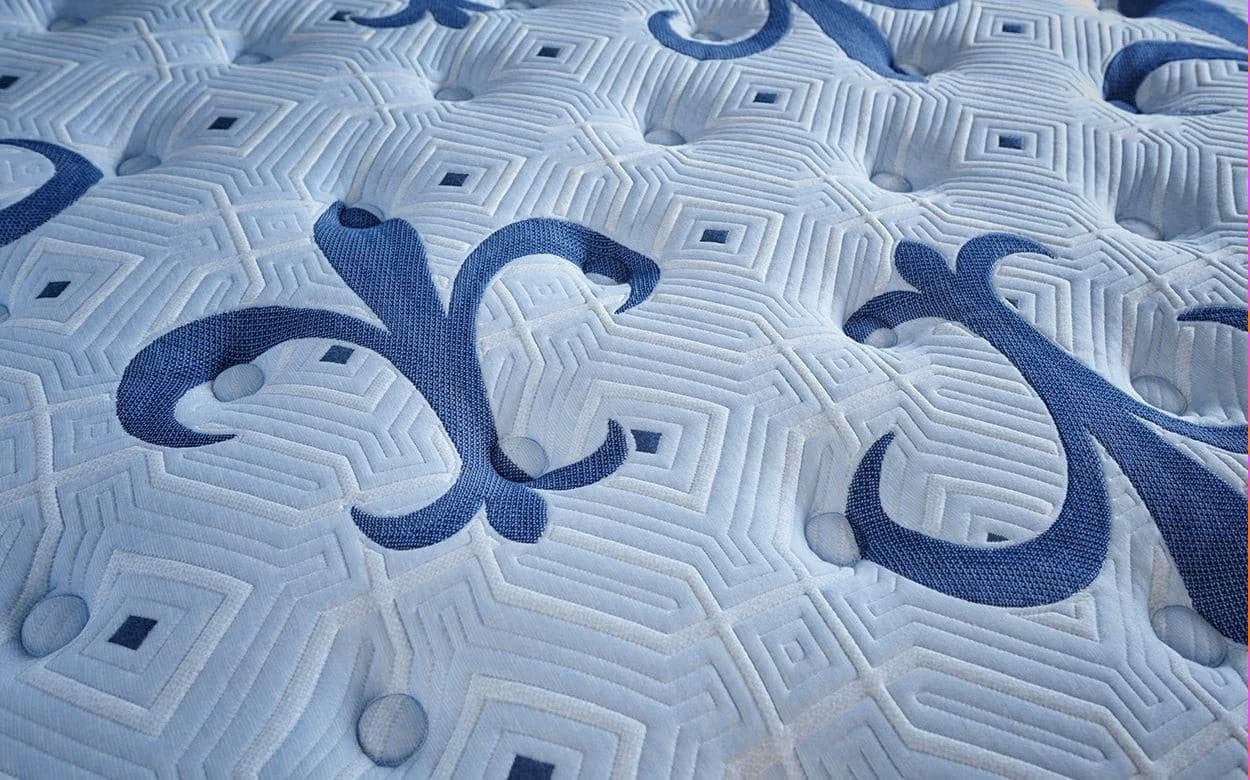Memory foam mattresses have transformed how people sleep. Designed to contour to your body, relieve pressure, and absorb movement, they offer a level of comfort and support that older coil mattresses can’t match. But with all the benefits comes an important question: Can you use a box spring with a memory foam mattress?
If you’re upgrading from a traditional innerspring mattress to memory foam, you might be tempted to reuse your existing box spring to save money or preserve the height of your bed. But not every foundation pairs well with modern foam beds and using the wrong support system can void your warranty or damage your mattress over time.
Table of Content
- Introduction
- Key Takeaways
- What Is a Box Spring?
- How Memory Foam Mattresses Differ from Innerspring Beds
- Why Box Springs Aren’t Always Recommended
- When a Box Spring Can Be Used
- Best Alternatives to Box Springs
- How to Choose the Right Foundation
- Comparison Table: Box Spring vs Other Bases
- Visual Graph: Support & Breathability by Base Type
- Best Box Springs for Memory Foam Mattresses
- Conclusion
- Frequently Asked Question
Key Takeaways
- Most memory foam mattresses should not sit directly on a traditional box spring.
- Box springs were designed for innerspring mattresses and don’t offer the consistent support foam needs.
- Using a box spring can lead to sagging, reduced performance, or warranty issues.
- Platform beds, slatted foundations, and adjustable bases are better options for memory foam.
- If you do use a box spring, it must be in excellent condition with a flat, supportive surface.
What Is a Box Spring?
A box spring is a wooden or metal frame housing a network of steel coils or springs. Traditionally, it’s wrapped in fabric and designed to absorb shock from an innerspring mattress while adding height and breathability.
Key Functions of Box Springs:
· Act as a shock absorber to prolong the life of a coil mattress
· Provide a stable, raised surface
· Improve airflow beneath the mattress
Innerspring mattresses rely on the box spring’s bounciness to create that “springy” feel. But memory foam behaves differently.
How Memory Foam Mattresses Differ from Innerspring Beds
Memory foam is a viscoelastic material that compresses and conforms under body heat and pressure. This design evenly distributes weight and relieves pressure points but only if the mattress sits on a firm, level surface.
Unlike innerspring mattresses, memory foam doesn’t require shock absorption. Instead, it needs consistent support across the entire bottom surface. When placed on a flexible or uneven foundation (like an old box spring), memory foam can:
· Sag or indent prematurely
· Lose its contouring ability
· Develop lumps and uneven spots
· Potentially void the warranty
Why Box Springs Aren’t Always Recommended
Most memory foam brands including Tempur-Pedic, Sealy, and Nectar explicitly advise against using traditional box springs. The primary reasons:
1. Insufficient Support
The coils inside a box spring can flex under weight, leading to inconsistent support across the mattress surface.
2. Accelerated Wear
Soft spots and dips can develop where the box spring sags.
3. Warranty Risks
Many manufacturers require a solid, non-flexing foundation to maintain warranty coverage.
4. Reduced Performance
A box spring can undermine the motion isolation and contouring benefits of memory foam.
When a Box Spring Can Be Used
There are exceptions. If your box spring is:
Very new
Rigid and reinforced with a solid platform surface or closely spaced slats
Designed to work with foam mattresses
It may be usable. Some modern “box springs” are technically platform foundations with no coils at all. Always check your mattress warranty and confirm whether your specific foundation meets manufacturer guidelines.
Tip: If you must use a box spring, consider adding a bunkie board a thin, flat panel that creates a consistent surface between your mattress and the box spring.
Best Alternatives to Box Springs
For most memory foam beds, one of these foundations is a safer bet:
1. Platform Bed
· Solid or slatted base with sturdy support
· Usually 10–16 inches high
· Compatible with all-foam and hybrid mattresses
2. Slatted Bed Frame
· Must have slats no more than 3 inches apart
· Ensures airflow while providing stable support
3. Adjustable Base
· Allows you to elevate your head or feet
· Reinforced frame and evenly supportive surface
4. Bunkie Board
· Low-profile, rigid panel placed on any frame or box spring
· Creates a flat surface for the mattress
How to Choose the Right Foundation
Consider:
· Mattress Warranty Requirements: Always read the fine print some brands will void your warranty if you use a box spring.
· Desired Bed Height: Box springs add height, but platform beds can be chosen in varying heights.
· Airflow and Cooling: If your studio gets warm, slatted frames may improve ventilation.
· Budget: Bunkie boards are inexpensive; adjustable bases are premium.
· Lifestyle: If you watch TV or work in bed, an adjustable base may be worth the investment.
Comparison Table: Box Spring vs Other Bases
|
Feature |
Traditional Box Spring |
Platform Bed |
Slatted Frame |
Adjustable Base |
|
Support for Memory Foam |
Poor–Fair |
Excellent |
Very Good |
Excellent |
|
Airflow |
Good |
Good |
Very Good |
Good |
|
Height Added |
8–10” |
10–16” |
8–14” |
Varies |
|
Motion Isolation |
Low |
High |
High |
High |
|
Ease of Setup |
Easy |
Moderate |
Moderate |
Complex |
|
Compatibility |
Innerspring mattresses |
All mattress types |
All mattress types |
All mattress types |
Visual Graph: Support & Breathability by Base Type

This graph compares the support and breathability of common mattress foundations. Platform beds and adjustable bases offer the best support for memory foam, while slatted frames provide excellent airflow. Traditional box springs score lowest in consistent support, making them less ideal for foam mattresses.
Best Box Springs for Memory Foam Mattresses
1. Standard Flat Foundation by Stearns & Foster
Overview:
The Stearns & Foster Standard Flat Foundation is designed to deliver a solid, level surface to support your mattress. Unlike traditional box springs, this flat foundation is non-flexing, providing consistent stability ideal for modern mattresses, including memory foam and hybrid designs. The robust build reduces motion transfer and helps maintain your mattress’s structural integrity over time.
Key Features:
· Rigid, non-yielding design for consistent support
· Solid construction helps extend mattress lifespan
· Wrapped in high-quality fabric to match Stearns & Foster mattresses
· Available in low-profile and standard heights
· Compatible with most bed frames
|
Pros |
Cons |
|
Excellent support for all mattress types, including memory foam |
Heavier than traditional box springs |
|
Reduces motion transfer |
Higher cost compared to budget foundations |
|
Maintains mattress shape and durability |
Limited flexibility—no shock absorption |
|
Pairs aesthetically with Stearns & Foster beds |
|
2. Standard Foundation Box Spring
Overview:
This Standard Foundation Box Spring is engineered for use with traditional innerspring mattresses. It uses a sturdy wooden frame and supportive design to add height and slight shock absorption. While it offers good airflow and elevation, it is generally not recommended for most memory foam mattresses due to its less rigid surface.
Key Features:
· Classic box spring design with supportive wooden slats
· Adds extra height to your sleep setup
· Lightweight and easy to handle compared to solid foundations
· Compatible primarily with innerspring mattresses
|
Pros |
Cons |
|
Provides some shock absorption for innerspring beds |
Not recommended for memory foam or latex mattresses |
|
Lightweight and easier to move |
Less consistent support across the surface |
|
Good airflow and breathability |
Can shorten foam mattress lifespan |
|
Cost-effective option for traditional setups |
|
3. TEMPUR-Flat Foundation by Tempur-Pedic
Overview:
The TEMPUR-Flat Foundation is built specifically to work with Tempur-Pedic mattresses, offering a sturdy, non-flexing platform that ensures your mattress performs as intended. This foundation replaces the need for a box spring by providing an ultra-stable, solid base. Its design maintains mattress shape, minimizes sagging, and enhances durability key benefits for high-density foam models.
Key Features:
· Solid flat foundation with zero flex
· Designed to optimize Tempur-Pedic mattress performance
· Durable wooden structure wrapped in matching fabric
· Helps maintain mattress warranty compliance
· Available in low-profile and standard heights
|
Pros |
Cons |
|
Exceptional support for memory foam and hybrid mattresses |
Heavy and requires two-person setup |
|
Extends mattress lifespan and prevents sagging |
Higher price point |
|
Stylish finish complements Tempur-Pedic designs |
|
|
Compatible with adjustable bases if removed |
|
Conclusion
So, can you use a box spring with a memory foam mattress?
Technically, yes but it’s usually not your best option.
Traditional box springs were never designed to support the dense, contouring properties of memory foam. They can sag, reduce your mattress’s lifespan, and void warranties.
Whenever possible, choose a solid platform bed, a slatted foundation with narrow gaps, or an adjustable base. If you have an existing box spring you want to keep, adding a bunkie board can help create a flat, supportive surface.
With the right foundation, your memory foam mattress can deliver the contouring comfort and pressure relief it was designed for so you sleep better every night.
Frequently Asked Questions
1. What happens if I put memory foam on a box spring?
Over time, the mattress can sag, develop indentations, and lose support. Most manufacturers discourage this setup.
2. Is there any way to use a box spring safely?
Yes. If your box spring is in excellent condition and fully rigid, you can add a bunkie board to create a flat surface.
3. Can I put memory foam directly on the floor?
You can, but it may restrict airflow and promote mold. Use a platform or slatted base if possible.
4. Do adjustable bases work with memory foam?
Absolutely. Memory foam is flexible and adapts well to adjustable bases.
5. What’s the difference between a platform bed and a box spring?
A platform bed is a solid or slatted frame that fully supports the mattress. A box spring contains coils and is designed for innerspring beds.
6. Will using a box spring void my mattress warranty?
In many cases, yes. Always check the warranty policy.
7. Does a memory foam mattress need a special foundation?
Not special, but it requires a consistent, sturdy surface without gaps.
8. What about slatted frames are they okay?
Yes, as long as slats are close together (generally less than 3 inches apart).
9. Is a bunkie board expensive?
No, most cost between $50–$100.
10. How do I know if my box spring is too old?
If it sags, creaks, or flexes when you press down, it’s time to replace it.


